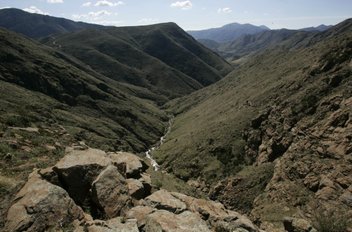What is a forest plan? A committee of scientists once said that a forest plan is simply a loose-leaf compendium of all decisions large and small that affect the administration of a national forest. Following adaptive management principles and practices, “decisions” can and are made at multiple scales: international, national whether or not made by the US Forest Service, regional and local. So too with assessments, and monitoring and evaluation measures. All these are the workings of adaptive management (pdf), not planning . The whole of the Forest Service ought to be charged to work together to accomplish broad conservation, preservation, and use goals through adaptive management. Framing needs to be changed to do this. A central planning frame has failed for 30 years. Why continue down this path?
In an adaptive management frame, forest supervisors oversee the day-to-day workings of a national forest administrative unit. But decisions affecting that unit are made in various ways at various scales, whether as part of laws, policies, programs, or activities. There are no administrative “kings” in this worldview. Instead we have various actors, some within the Forest Service and some without, working in interrelated systems that frame the workings of a national forest. We have whole organizations working together to accomplish the work of adaptive management. The task is not left to “planning.”
Now let’s begin to parse the most recent “proposed rule” for developing a forest plan. Note first that the three levels of administrative decision-making outlined in the proposed rule — national, forest, project or activity — don’t fit the adaptive management model outlined above. Why does the Forest Service continue to pretend that managing a national forest comes down to three levels of decision-making? I can see no reason, beyond tradition for maintaining this hierarchy. Can you?
If the Forest Service is incapable of understanding adaptive management, is there any hope in trying to fit adaptive management into the Forest Service culture? After thirty years watching and attempting to participate in rule development for the RPA/NFMA I am once-again left to doubt whether any progress can be made.
Adaptive management is about organizations learning to adapt to ever changing environmental and social systems. Adaptive management is not about “planning.”
Perhaps I’m too old to dabble in this stuff anymore. Perhaps the “devil in the details” ought to be left to those younger. But I believe I’ve seen this same rhetoric before — since 1979 — and it appears, broadly speaking, pretty much the same to me. The Wilderness Society gives the proposed rule a B. I give it, once again, an F. The Forest Service simply doesn’t get adaptive management. The F is for failing to adequately frame the process, for “frame blindness” and other decision traps.
If I were a forest supervisor I would feel victimized by this (and earlier “planning rules”). Forest supervisors are asked to act as “forest kings,” not forest administrators. The Washington Office of the Forest Service does a disservice to both forest supervisors and regional foresters, as well as many in the so-called “staff” program areas of the Forest Service by continuing this tradition of laying it all at the feet of forest supervisors. We might as well call them “forest scapegoats” if this tradition continues. The Forest Service seems intent to continue its 30-year tradition of gridlock unless and until there is an awakening.
I will not comment here on the many process failings leading up to this proposed rule. I’ve done it before. Suffice it to say, despite many pleadings, the Forest Service once again gathered some input in the early stages, then went into the isolation booth to hatch a rule. It should surprise no one that it closely resembles earlier rules. No “real” blogs, no wikis, no true collaboration in rule development. Why not? Other government organizations use them. What we got instead was administrative politics as usual, with associated administrative gridlock.
It is likely too late to change this rule. Despite billing it as Draft, we all know that only minor tweaking will be allowed between Draft and Final Rule. It would be refreshing for the Forest Service to admit that it botched this effort. But American politics will not allow it. Too bad! Peter Drucker once remarked that one key measure of the worth of a decision is how rapidly it can be changed in light of new information. Would that the Forest Service could “see the light,” and change this rule.






